Up until the second half of the 2010s, Intel’s dominance in the CPU market was well-established since the year they released their famous Intel Core lineup.
We were almost nearing a complete monopoly by Intel when AMD launched its Ryzen line in the spring of 2017. Since then, we’ve witnessed fierce competition between the two brands in every market segment and price range. Although Intel is still leading in sales numbers, we’ve seen its competitor steadily chipping away at its market share – this summer, AMD’s market share hit a 14-year high.
In this article, we will try to answer one of the age-old questions in the tech community: which is better – Intel Core or AMD Ryzen?
Since the brands offer so many different models that target different market segments, this won’t be an easy task, and it will likely depend on the exact model you’re looking at and its intended purpose.
Here is our ultimate Ryzen vs Intel showdown, where we will go through each manufacturer’s specs, process, and history.
Ryzen vs Intel – Introduction
Ryzen is AMD’s implementation of the Zen architecture, first launched in early 2017. It marked AMD’s return to the high-end CPU market and introduced an era of competition we’re still watching unravel today.
Compared to AMD’s previous generation, Bulldozer, the Zen architecture significantly improves clock speed (over 50%) without increasing power use.
Ryzen offers products for all market segments – entry-level (Ryzen 3), mainstream (Ryzen 5), performance (Ryzen 7), enthusiast (Ryzen 9), and high-end desktop (Ryzen Threadripper).
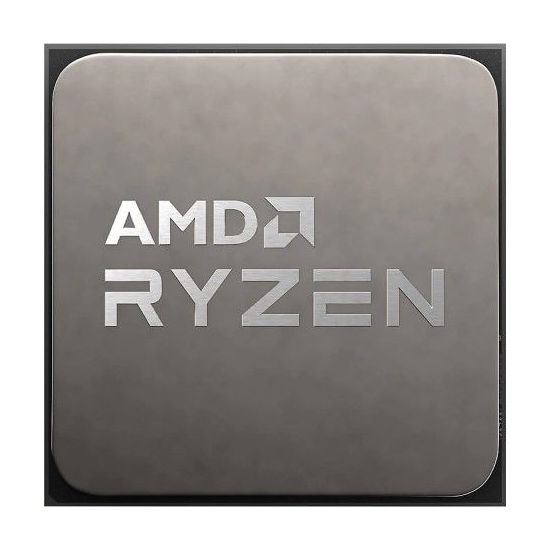
Ryzen Pros:
- A large number of cores and threads that allow for better multitasking
- All CPUs have an unlocked multiplier for overclocking
- Smaller semiconductors provide better performance and reduce power cost
- Generally better value for money
Ryzen Cons:
- Worse single-core performance
- Worse drivers and software
Intel (INTegrated ELectronics) is still the world’s leading CPU manufacturer, despite AMD’s significant progress. Currently, Intel is distributing around 60% of all x86 processing units worldwide – but the gap has been reduced significantly.
Intel’s signature is the Intel Core product line that replaced the mid-to-high-end Pentium CPUs in January 2006. The processors are known for their excellent single-core performance and high clock speed, playing a significant role in gaming.
Much like AMD, Intel also offers products for all market segments: Core i3, Core i5, Core i7, and Core i9, all provide different levels of performance and price.
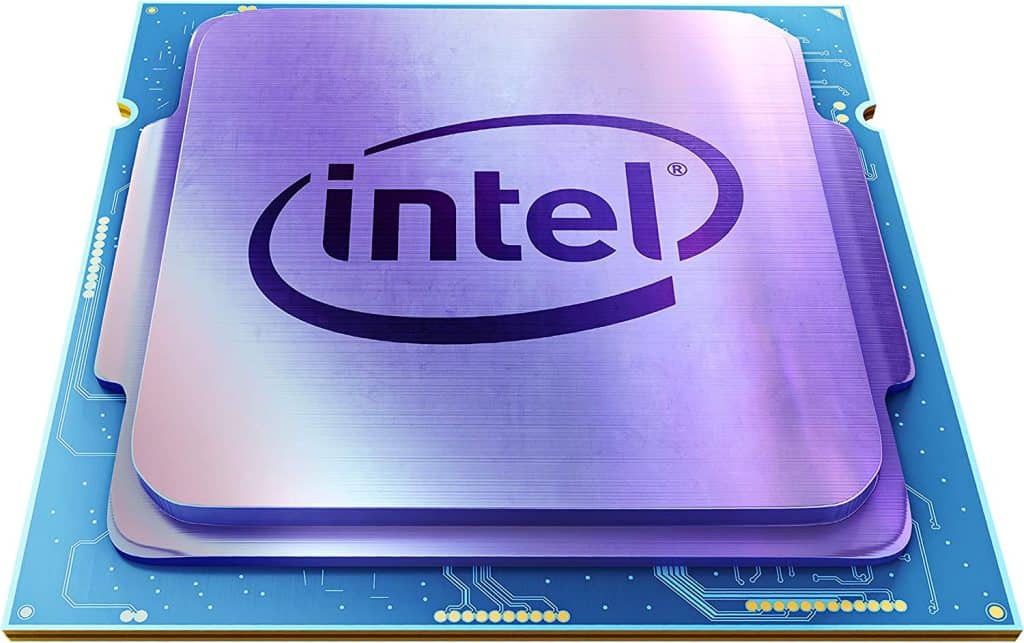
Intel Pros:
- Great single-core performance
- High clock and boost clock speeds
- Less expensive in the lower range
- Better drivers and software
Intel Cons:
- Inferior lithography makes for worse power performance
- Generally, fewer cores and threads in the mainstream range
Key Specifications
Now, let’s take a look at the key specifications of each manufacturer and see how they make their processing units.
The number of cores and threads
The number of cores and threads is typically something that most people will look at first when comparing two CPUs, even if they’re not particularly tech-savvy.
Years ago, CPUs had a single core handling a single task at a time. Nowadays, quad-core (4 cores) processors are relatively standard and, in many cases, even subpar.
Cores are physical elements of a CPU – you can actually see them on your chip. Modern processors use simultaneous multithreading, which splits each of these cores into two virtual ones, known as threads.
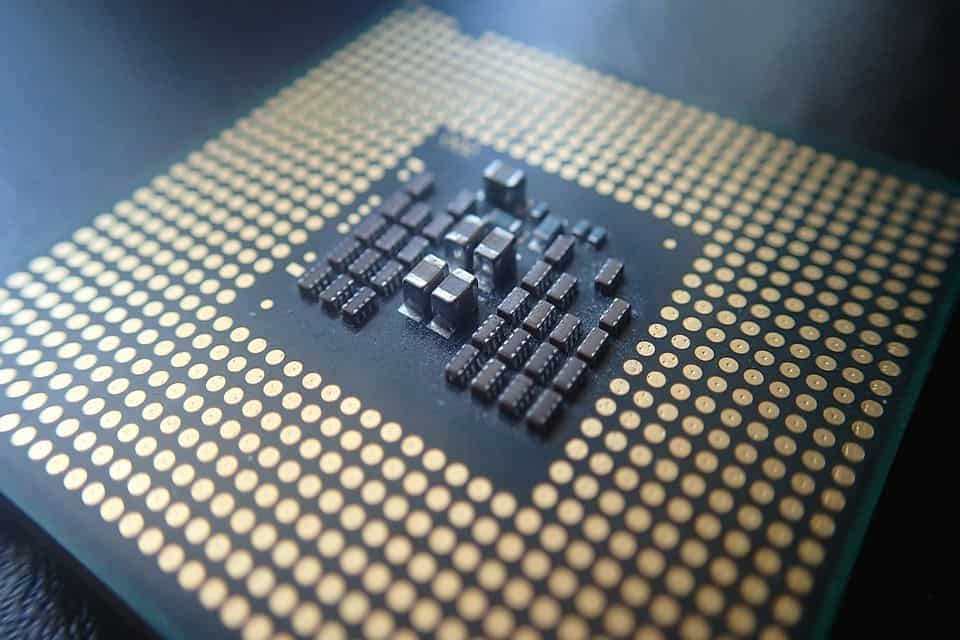
AMD is mainly known for this process. Most Ryzen chips will feature two threads per core, allowing for outstanding multi-threaded performance that will make a massive difference for people running video editing, animation, and other programs.
Looking at the same price ranges, Intel generally provides fewer cores and threads. For example, the popular 9th generation Coffee Lake architecture features chips that offer exclusively one thread per core like the i7 9700K (8 cores, 8 threads) and i5 9400 (6 cores, 6 threads).
It seems like Intel stepped up their game with the 11th generation and the Rocket Lake microarchitecture that features two threads per core (and hefty price tags as well).
On the other hand, understanding which apps can take the greatest advantage of multiple threads is crucial when choosing a CPU. In gaming, for example, core and thread counts aren’t that significant past a certain point.
Winner: Ryzen. AMD generally offers more cores and threads across most models and price ranges. Intel addressed this in their newer architectures, but AMD still dominates the mid-range market.
Clock Speed
Clock speed refers to the number of cycles per second that any given CPU can complete. It’s measured in gigahertz (GHz), with 1 GHz being one billion cycles per second.
In theory, a 4 GHz CPU would be twice as fast as a 2 GHz one, but things aren’t as simple. The number of cores and threads, RAM, cache memory, and the overall microarchitecture all play massive roles in determining the processing power of a chip.
Still, clock speed is a good way to gauge the processing power and tasks a CPU is designed for.
When comparing Ryzen vs Intel, we can assume with solid consistency that Intel generally offers a higher boost clock speed across the board.
Although the base clock speed of each particular chip will vary, Intel’s CPUs almost always produce a better single-core clock boost, thanks to their signature Intel Turbo Boost technology. For example, we can compare Ryzen 9 5900X and Core i9-11900K that feature virtually the same price. You’ll notice that the 5900X offers a 3.7 GHz base and a 4.8 GHz boost clock, while the 11900K offers a 3.5 GHz base and a 5.3G Hz boost clock speed.
For this particular comparison, we should keep in mind that the Ryzen 9 in question offers more cores and threads (12/24 vs 8/16) than the Core i9, as well as more cache memory.
Winner: Intel. The clock speed of any two chips should be assessed individually, but Intel generally excels in this category, especially when boosting clock speed.
Socket
When looking at CPU sockets, you’re mainly considering two things: versatility and future-proofing.
Versatility refers to the range of supported CPUs, the number of models any socket allows for. When it comes to future-proofing, you need to simply explore whether the socket in question will support upcoming microarchitectures and models.
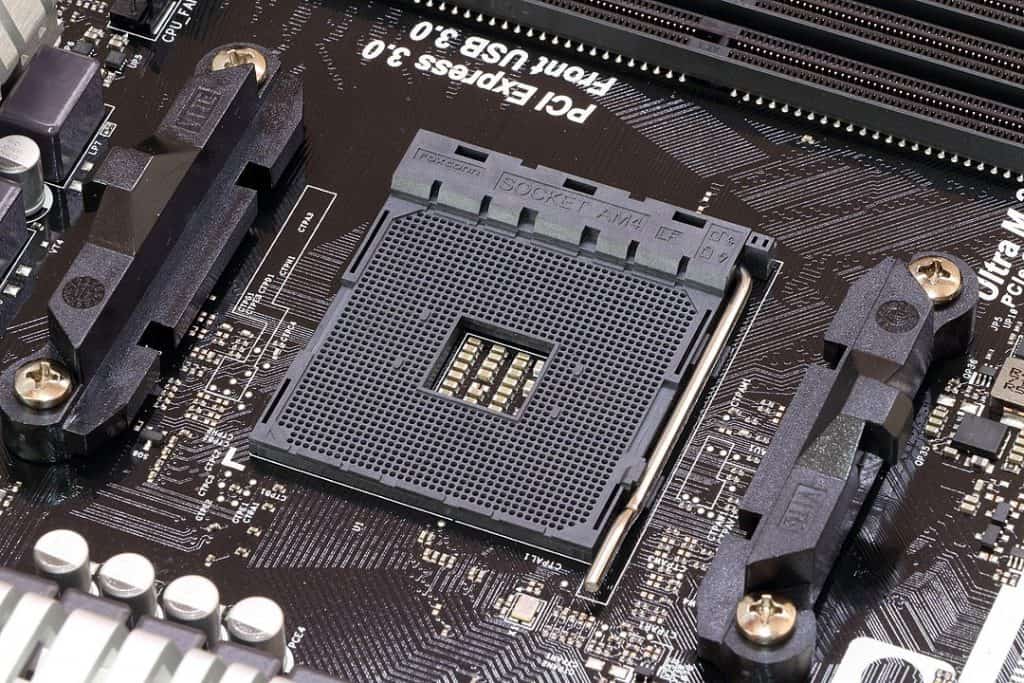
The current socket for AMD is the AM4, while most current mainstream Intel CPUs use LGA 1200. This is a critical moment for both sockets – they’re both getting successors in AM5 and LGA 1700. In fact, Intel has already announced the new Alder Lake architecture that will support DDR5 and use the LGA 1700 socket.
AMD’s Zen 4 microarchitecture is coming soon, and it will likely introduce the AM5 socket. All the latest Ryzen CPUs still run on the AM4 socket, which makes it more current and more versatile.
Winner: Ryzen. It’s a small win for AMD here, given that both sockets are being replaced relatively soon. Ryzen gets the win solely thanks to the range of CPUs that AM4 supports.
Cache memory
Cache memory is a CPU component that improves the efficiency of data retrieval. It’s a temporary storage slot that your processor uses to retrieve frequently accessed data.
Cache is important because it stores program instructions that are used repeatedly and makes these instructions much more readily available to the CPU than your primary memory source. This increases the speed of the program and makes your processor more efficient overall.
Comparing different models from AMD and Intel within the same price category, you’ll notice that AMD tends to offer more cache memory than corresponding Intel Core models. For example, in our Ryzen 5 2600 vs i5 9400F comparison, we mentioned that Ryzen offers almost double the cache memory than its counterpart.
The 2600 in question even has more cache than some much more expensive chips from Intel’s catalog, like the i7-7700K that occupies the higher end of the pricing spectrum.
Winner: Ryzen. Most CPUs in AMD’s latest architectures feature more cache memory than Intel’s competing chips.
Integrated graphics
Integrated graphics are by no means the way to go if you want to play modern games on medium settings. Even budget-friendly dedicated GPUs like the GTX 1050 significantly outperform some of Intel and AMD’s best integrated graphics solutions.
Still, both manufacturers have made progress over the years in this department, offering some solid solutions, particularly in the mid-range laptop market.
AMD’s signature Accelerated Processing Unit (APU) is the Radeon Vega series which we can safely say is the market leader at the moment. Up until 2019, Intel offered UHD Graphics as its integrated graphics solution, but it never really came close to Vega. Since then, Intel has introduced its Iris Plus APU solution that reduced the gap but still has a ways to go to match Vega’s performance.
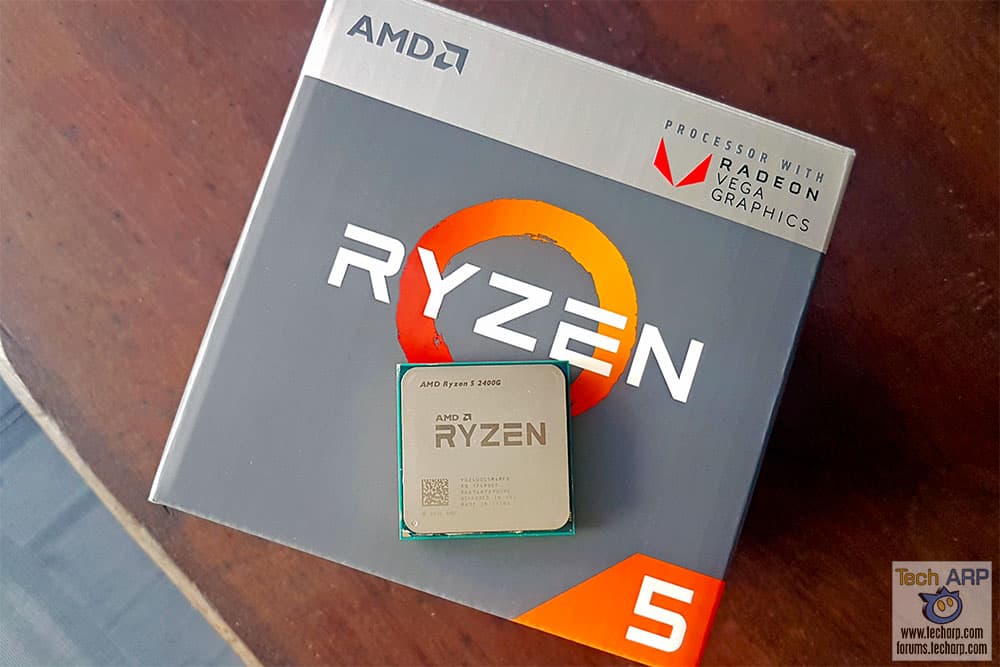
Winner: Ryzen. At the moment, AMD makes the best integrated graphics solutions on the market – the Vega series delivers the most value for money. Intel’s most expensive Iris Plus found in the Core i7-1065G7 can’t even match the FPS of AMD’s Vega 8, let alone the more expensive Vega 11.
Power consumption & heat
Power consumption is measured using TDP (Thermal Design Power) and Maximum Temperature as key indicators. Since computing processes generate electricity and move it through your CPU, this generates heat. The more heat, the more cooling power is required to keep the CPU from overheating and experiencing issues.
TDP simply refers to the amount of heat your cooling system is designed to dissipate – in other words; it signifies your CPU’s power consumption under the maximum theoretical load.
Ryzen processors are generally denser: they pack double the cores and cache memory in roughly the same (or smaller) area as Intel. This means AMD chips run a little hotter when compared to Intel’s products from the same price range since it’s harder to dissipate heat from a small, dense chip.
However, when you look closer, Ryzen CPUs are much more power-efficient. If you take an Intel processor with the same number of cores as a Ryzen (say, Core i9-9900K vs Ryzen 7 3700x), you’ll find that Ryzen runs cooler and requires less power.
Many of these differences are due to AMD’s architecture and lithography, which we’ll get to later in the article.
Winner: Ryzen. AMD’s chips might run at higher idle temperatures, but they’re more power-efficient. Compare them with Intel’s chips that feature the same number of cores, and you’ll usually see a big difference in TDP.
Standout Features
Now that we’ve gone through the key specs let’s look at some critical differences in our AMD Ryzen vs Intel comparison.
RAM compatibility and effect on performance
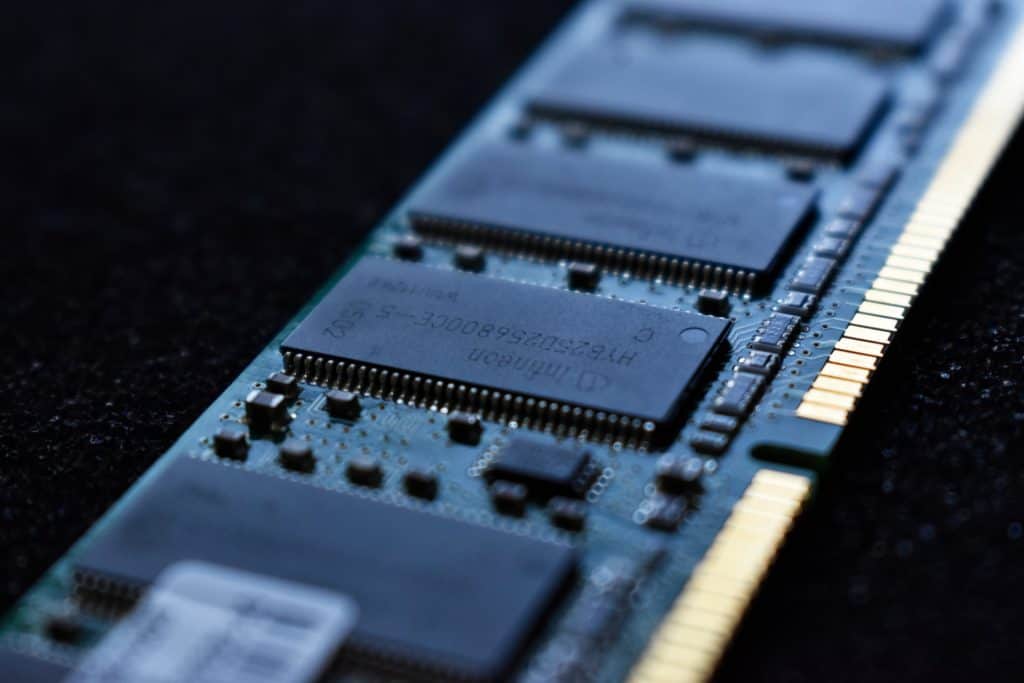
This is a minor point of difference, but it’s worth mentioning.
We all know that the amount of RAM you fit your PC with will significantly impact its overall speed and processing power. Many casual users might not realize that RAM speed can also have a significant impact on your CPU performance.
RAM speed refers to the amount of time that your RAM requires to write or read data after receiving a request from your CPU. Like clock speed, RAM speed is measured in millions of cycles per second or MHz.
It’s generally accepted that the best RAM speed for Intel CPUs is 3,200 MHz, while Ryzen CPUs work best when combined with 3,600 MHz RAM. Furthermore, AMD chips have proven to be more sensitive to changes in RAM speed, so a switch from 2,666 MHz to 3,200 MHz combined with a Ryzen CPU will likely give you a bigger performance boost.
Winner: Tie. Ryzen processors might work better with faster RAM speeds, but this doesn’t mean they’re necessarily faster. It’s all about using RAM speeds that are best matched with your CPU.
Stock cooling systems
Suppose you’re building a high-end gaming setup or a workstation PC that’s supposed to be handling high-resolution video editing/3D modeling. In that case, you probably know that a stock cooler isn’t going to cut it.
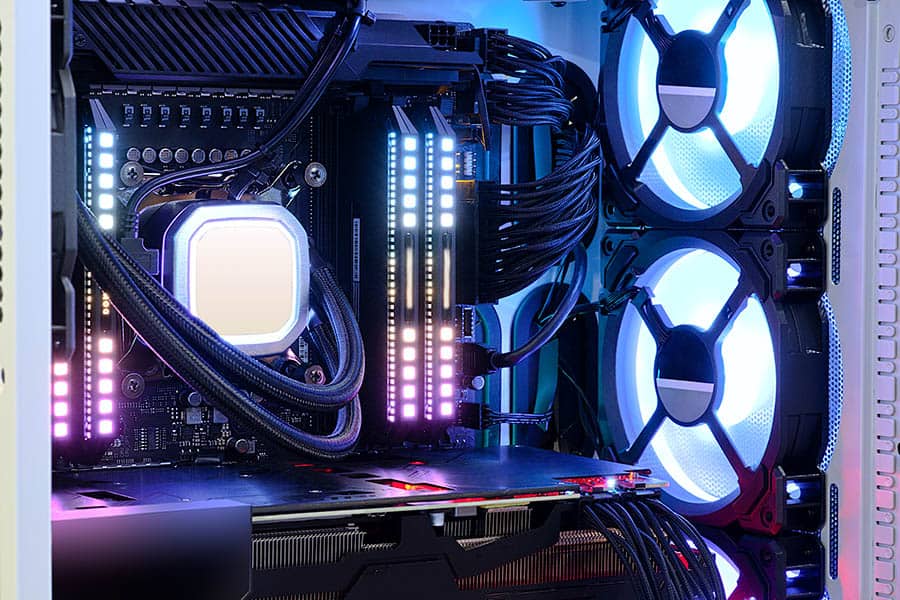
You need an aftermarket cooler that can handle overclocking, boosts, and run without making you feel like your desktop tower is about to fly.
On the other hand, if you’re looking for a mid-range build that should handle moderate to (occasionally) intense computing, a stock cooler can be enough. Both AMD and Intel fit many of their CPUs with solid stock coolers that can even handle slight overclocking.
AMD is particularly effective in this area with a range of fine coolers like the Wraith Stealth that rivals many aftermarket models. Intel has announced that its 12th generation Alder Lake CPUs might feature brand new coolers – the Laminar series.
Winner: Ryzen. At the moment, AMD makes more competent and efficient cooling systems. However, Intel has announced a new series of coolers that have been developed based on customers’ and partners’ feedback.
Lithography & architecture
One of the major criticisms directed towards Intel is the lack of innovation in its manufacturing process and lithography.
Intel has been relying on their 14nm semiconductors for years, while AMD has made great strides in this area and embraced the 7nm process to the delight of many tech-savvy users. The commercialization of 7nm chips from AMD is essentially the reason behind the brand’s resurgence and dominating performance in recent years.
Smaller transistors are simply more efficient: more of them can be fitted on a single chip, they can do more calculations without overheating, and they allow for smaller die sizes – which helps reduce costs and increase density. Smaller transistors also allow for more power efficiency, which is why Ryzen CPUs are generally more power-friendly.
Winner: Ryzen. The efficient microarchitecture and performance-to-power ratio of the latest AMD processors are impossible to overstate. The combination of the Zen 3 architecture and the 7nm process node makes AMD the faster-moving brand right now.
Overclocking
Gamers are already familiar with the fact that AMD is much more open to overclocking than Intel. All Ryzen chips come with an unlocked multiplier, ready to be tuned to your liking.
On the other hand, Intel only allows users to unlock specific chips – the ones with a “K” at the end. These chips often come at a premium price and, more importantly, force you to purchase a pricey Z-Series motherboard, the only one that supports full overclocking. Going back to one of our previous points about cooling systems, fully overclocking an Intel CPU will force you to invest in an aftermarket cooler.
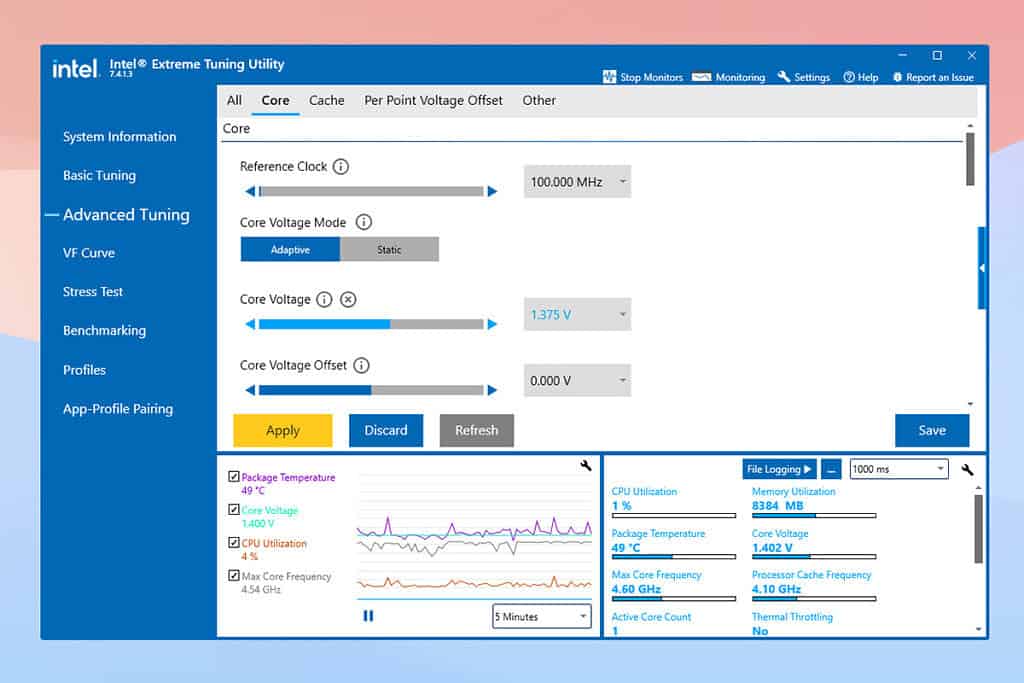
All that said, Intel offers more overclocking headroom, which means you can gain a higher performance boost from overclocking an Intel than a Ryzen CPU. While AMD is more lenient and beginner-friendly, it offers less overclocking headroom – sometimes even falling short of a CPU’s maximum single-core boost.
Winner: Tie. Intel offers more overclocking headroom, but it’s not as easy or cost-efficient to overclock. Ryzen is more open and beginner-friendly but doesn’t offer as big of a performance boost.
Productivity & content creation
When building a PC, most high-end users will have a particular goal in mind: depending on the intended use for the PC, they’ll be looking at different components and price ranges.
For productivity, content creation, and any type of image or video manipulation, your CPU is among the most important components you should be looking at. A high-end processor combined with lots of RAM will be able to execute some quite complex processing instructions in a short amount of time.
What you’re looking for here is multi-core performance. You want to find a CPU with as many cores, threads, and cache memory as possible. The types of programs you’ll be running (Photoshop, AfterEffects, AutoCAD) will all benefit from additional cores and threads.
Winner: Ryzen. If it wasn’t clear from our Ryzen vs Intel comparison so far, AMD makes denser chips that offer more cores, threads, and cache. As a result, Ryzen CPUs are absolute market leaders in the productivity niche.
Gaming Performance
If we were writing this article two or three years ago, this is a point where there would’ve been almost no debate – Intel has always been known as the top choice for a gaming CPU. You can look at any of their high-end chips and see that this claim still holds true today.
While Intel might not offer as many cores and threads as AMD in the same price categories, it does have one trick up its sleeve: single-core performance. Thanks to Intel’s signature Turbo Boost technology, their CPUs achieve great single-core scores on benchmark tests. Even modern games won’t use more than six cores, which is a big plus for Intel.
However, AMD’s Ryzen 5000 processors have bridged this gap massively, and the gaming niche is now more competitive than ever. The Ryzen 9 5900X is arguably the best gaming CPU money can buy right now, closely followed by Intel’s Core i9 11900K.
Winner: Tie. Our AMD Ryzen vs Intel showdown is most tightly contested in the gaming market. From high to low-tier gaming, both AMD and Intel offer impressive CPUs that feature different specs and prices. You’ll be hard-pressed to notice any significant difference in performance between two competing models, especially in high-end gaming.
Ryzen vs Intel – an Example comparison
Let’s illustrate the differences between Ryzen and Intel CPUs with an example comparison. We’ll use AMD Ryzen 5 5600X and Intel Core i5-11600K, two mid-range chips that offer similar levels of performance.
| Features | Ryzen 5 5600X | i5 11600K |
|---|---|---|
| Launch date | 11/05/2020 | 03/30/2021 |
| Product family | AMD Ryzen™ 5 Desktop Processors | 11th Generation Intel® Core™ i5 Processors |
| Number of cores | 6 | 6 |
| Number of threads | 12 | 12 |
| Base clock | 3.7 GHz | 3.9 GHz |
| Max turbo clock | 4.6 GHz | 4.9 GHz |
| Can be overclocked | Yes | Yes |
| Max temperature | 95oC | 100oC |
| RAM speed | 2933MHz | 2666MHz |
| L1 cache | 384KB | 384KB |
| L2 cache | 3MB | 1.5MB |
| L3 cache | 32MB | 12MB |
| TDP | 65W | 125W |
As you can see, the i5 11600K outshines the 5600X in clock speed and single-core performance. It’s also more power-hungry and, while it can be overclocked, it’ll require a Z-series motherboard and, most certainly, an aftermarket cooler.
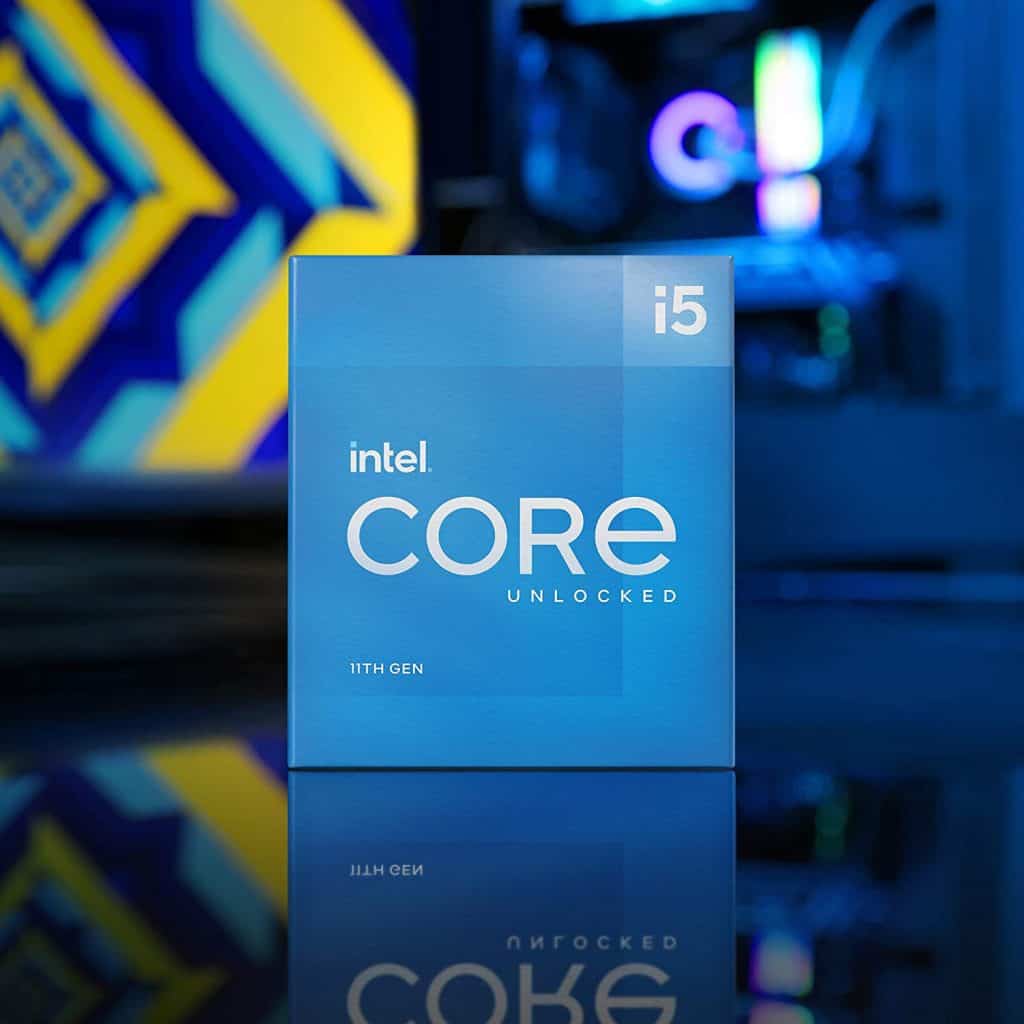
Ryzen 5 5600X, on the other hand, offers much more cache memory and is far more power-efficient. This is one of the rare cases where Intel and AMD offer the same number of cores and threads in the same price range, but AMD arguably still offers better multi-core performance across the board.
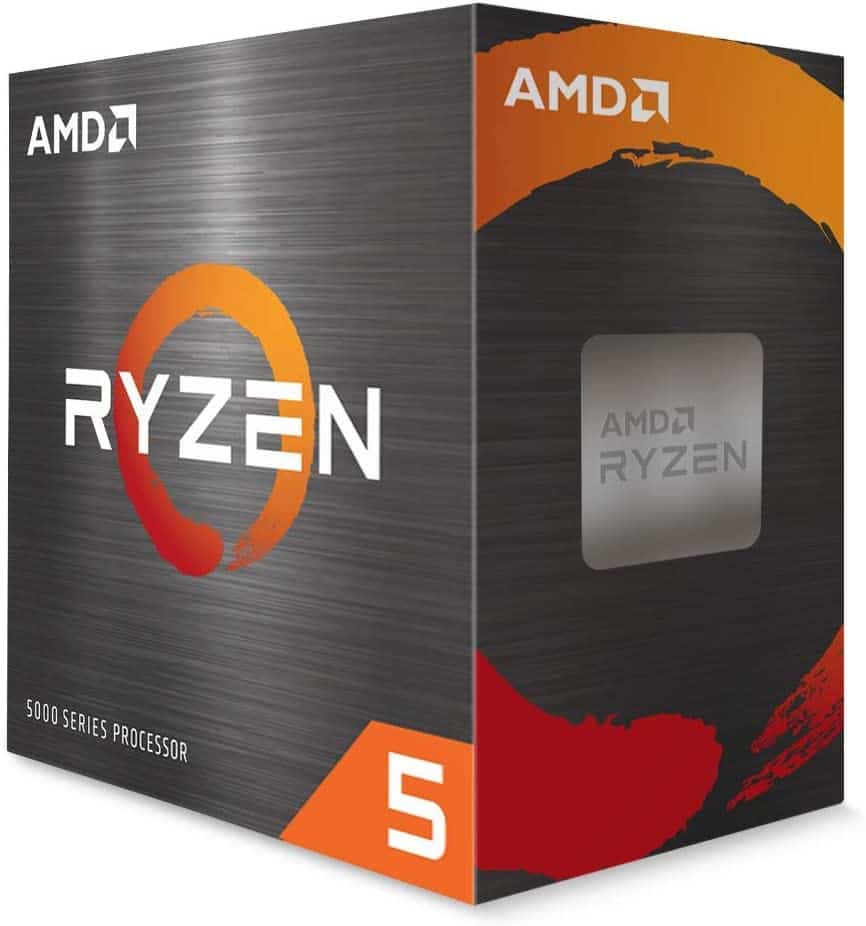
Price
It’s hard to reach a definite conclusion when it comes to which brand makes chips that offer more value for the money.
The issue here is that Intel has a larger stock and a bigger market presence, while AMD’s best chips are often overpriced or hard to find, even when their recommended price undercuts that of Intel.
Still, you can take a look up and down each brand’s product offering and see certain patterns. For example, Ryzen seems to rule the high-end and enthusiast markets. Intel seems to be more competitive in the mid-range and budget markets (which comprise the largest portion of both brands’ sales).
In our example above, the i5 11600K offers a more competitive price than the Ryzen 5 5600x – which is the case for a lot of i5 vs Ryzen 5 examples.
Winner: Ryzen. Unfortunately for Intel, AMD still has the edge in performance-per-dollar. Even when their CPUs are more expensive, there’s no getting around the fact that Ryzen offers better performance at a lower energy cost.
The Future for Intel and AMD
What does the future hold for each of these manufacturers?
It’s an exciting time to be on the lookout for a new CPU right now. The new DDR5 standard is already starting to make waves – Intel has already confirmed, and AMD has unofficially confirmed that their new generations will support DDR5.
Intel is releasing Alder Lake, its 12-generation microarchitecture that will finally abandon the 14nm process and embrace 10-nm semiconductors. It will be the first hybrid generation for desktops, featuring a mix of high-performance and high-efficiency cores in a single chip. The generation is set for a November 4 release, and it already looks enticing.
By the looks of it, AMD will, once again, outdo themselves with the much-anticipated Zen 4 architecture. Zen 4 is to be produced on a 5nm node, which is expected to further increase the number of cores and threads in Ryzen CPUs while saving more energy. There isn’t a definite release date for Zen 4, but it’s expected sometime in 2022.
Conclusion
The two manufacturers have made great strides, and their competition has helped drive the entire CPU space forward. Every year, it seems like we get new models that provide more power at a reduced energy cost.
However, as you might have concluded from our Ryzen vs Intel comparison, AMD is the faster moving manufacturer right now. Things are still playing out in the market, but it seems that Intel is slowly paying for its lack of innovation when it comes to lithography and microarchitecture. Today, it’s getting increasingly harder to recommend Intel as a manufacturer over AMD, although Intel’s specific models still outperform some of their counterparts from AMD’s portfolio.
Ryzen CPUs dominate the productivity and content creation market. If you’re looking for a powerful CPU to run multimedia and editing programs, you’ll find AMD’s offer more suited to your needs.
Intel has some impressive chips for gaming performance that excel in single-core benchmark tests and can be overclocked. They are, however, under relentless pressure from AMD, which has produced some of the best gaming CPUs on the market.